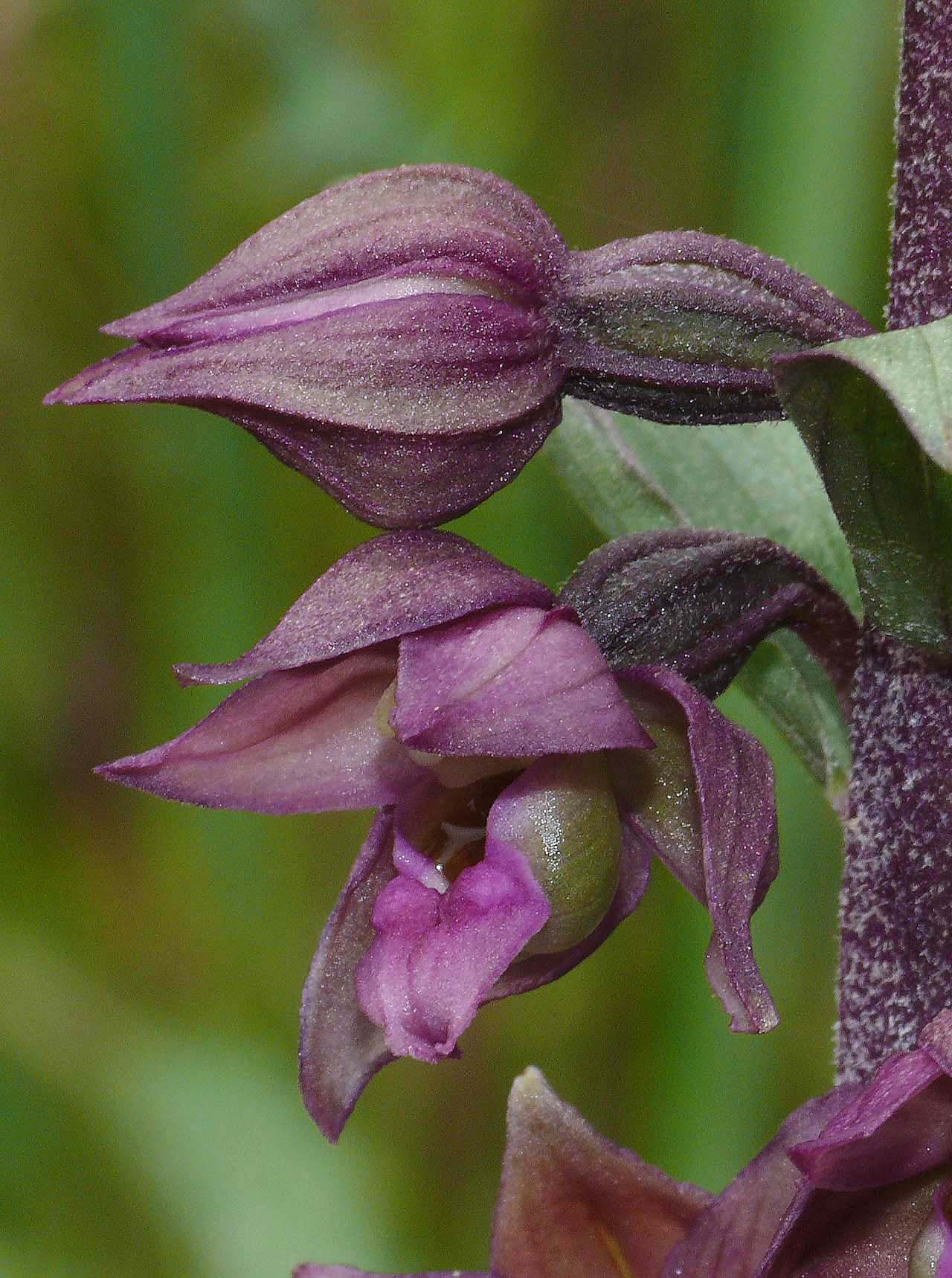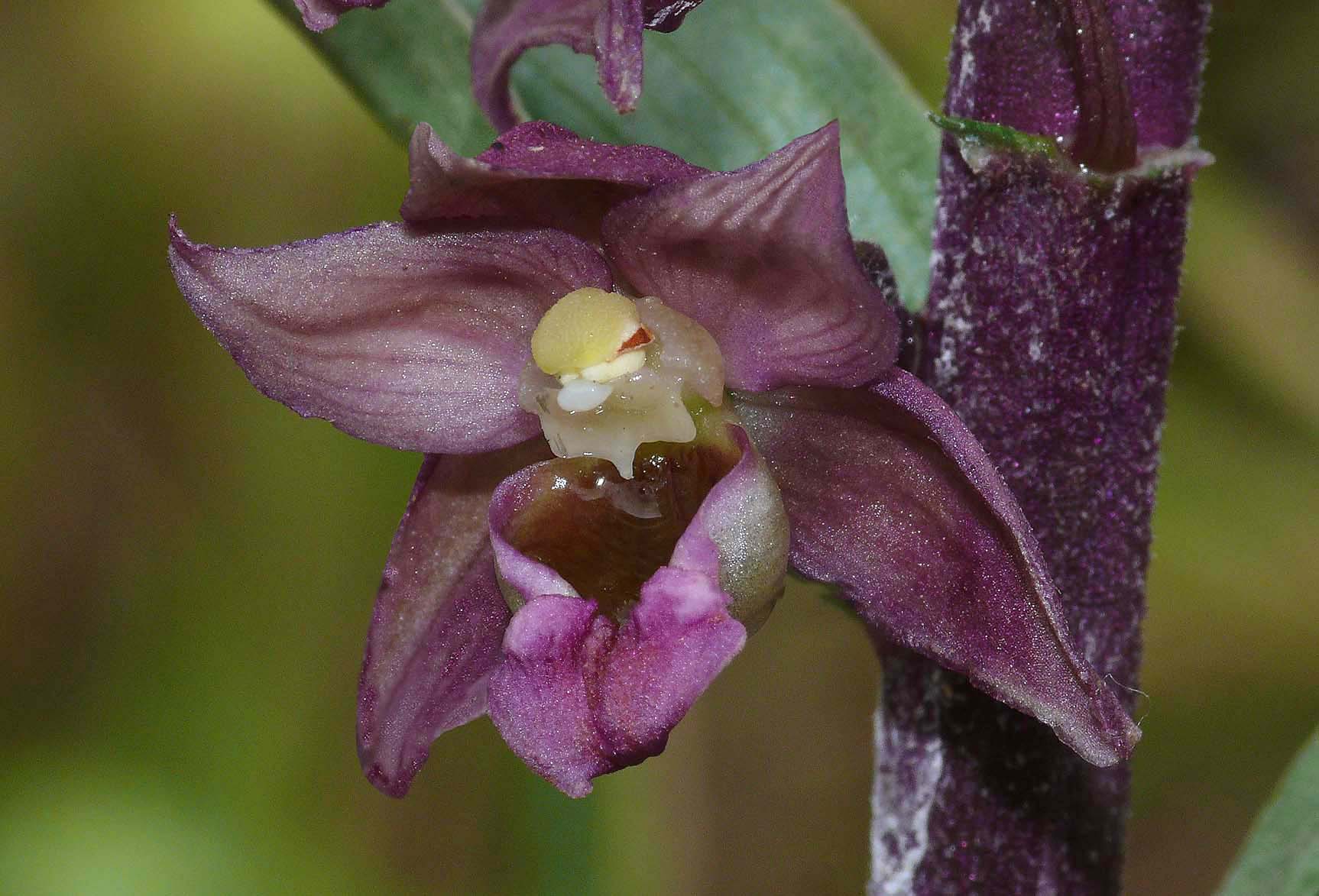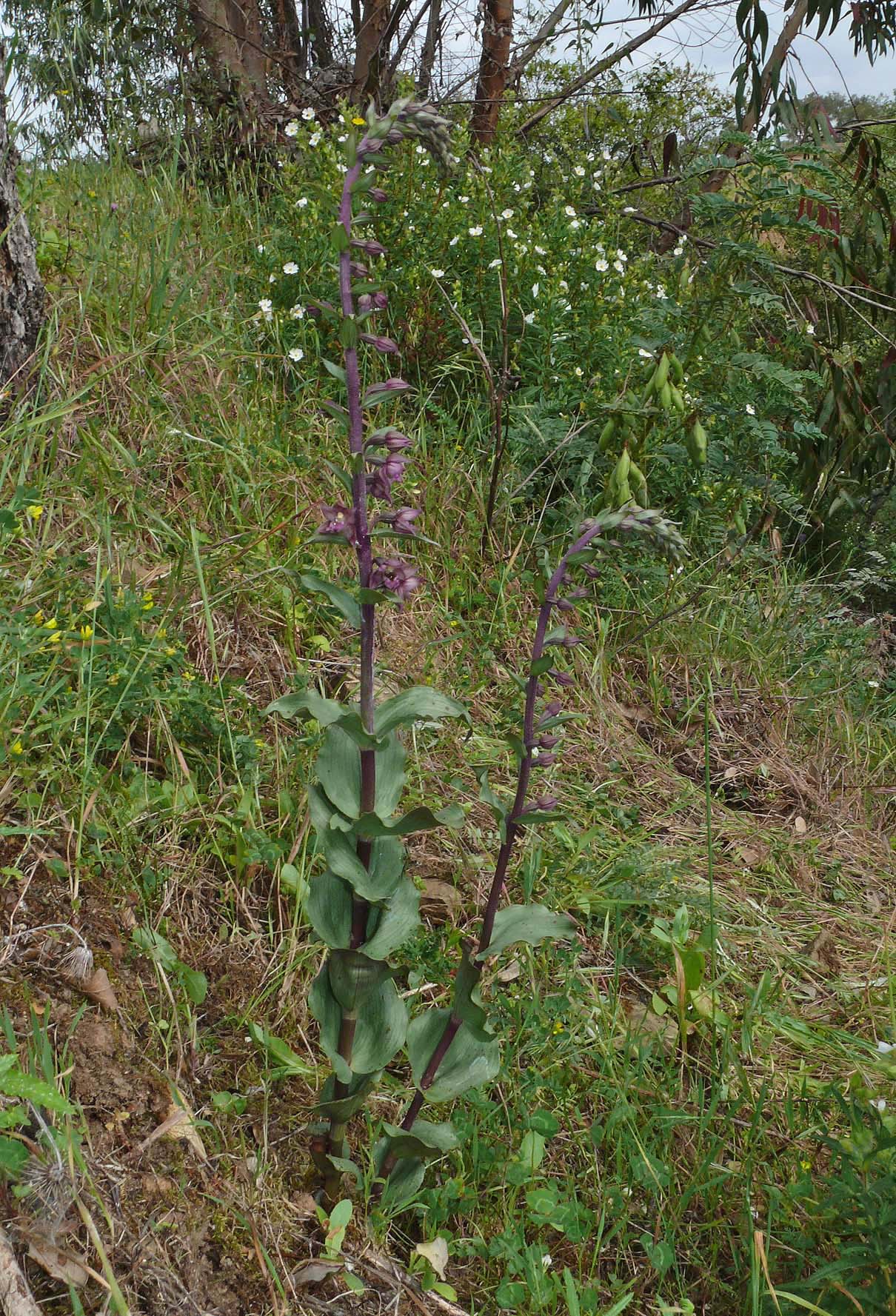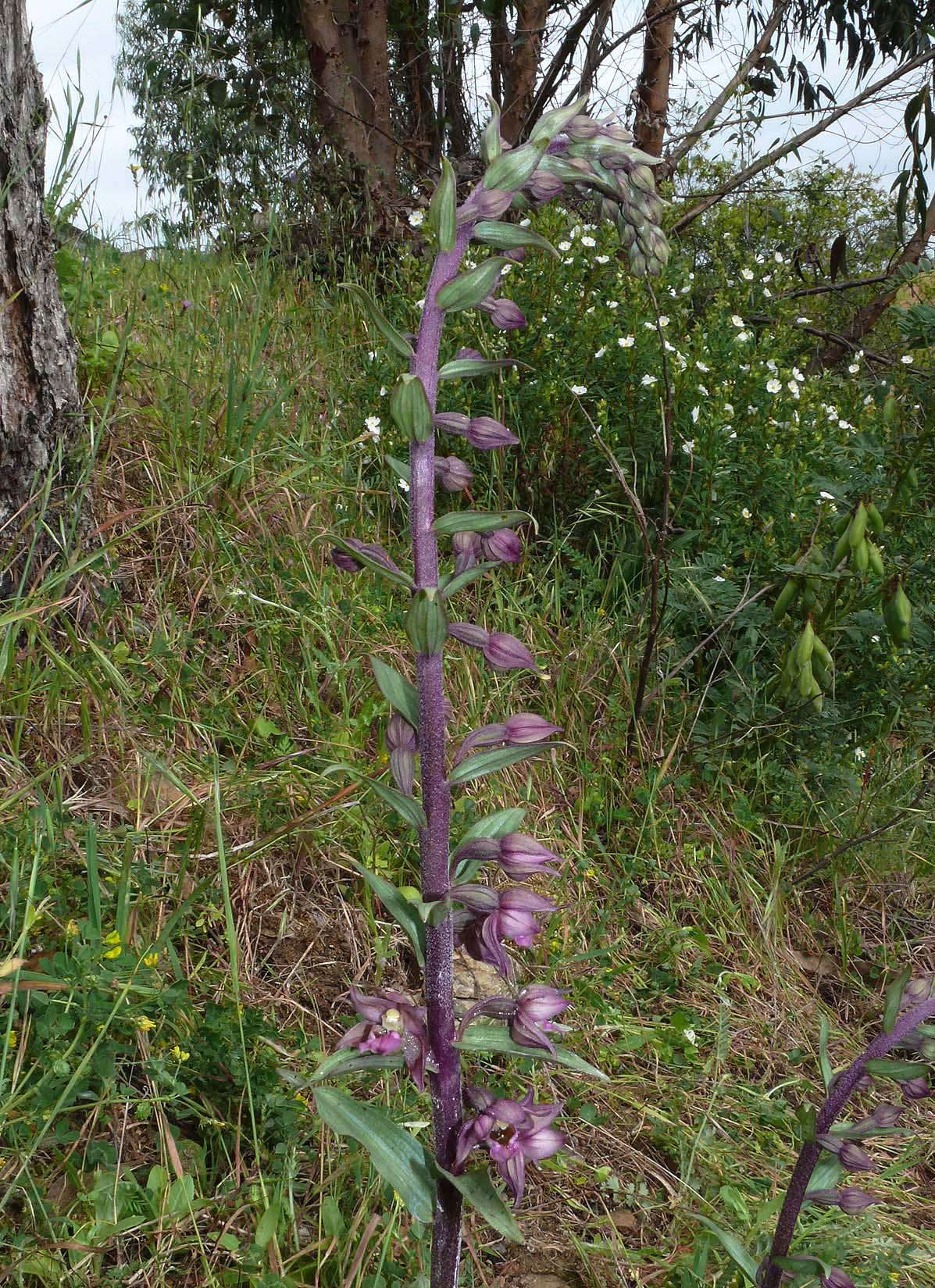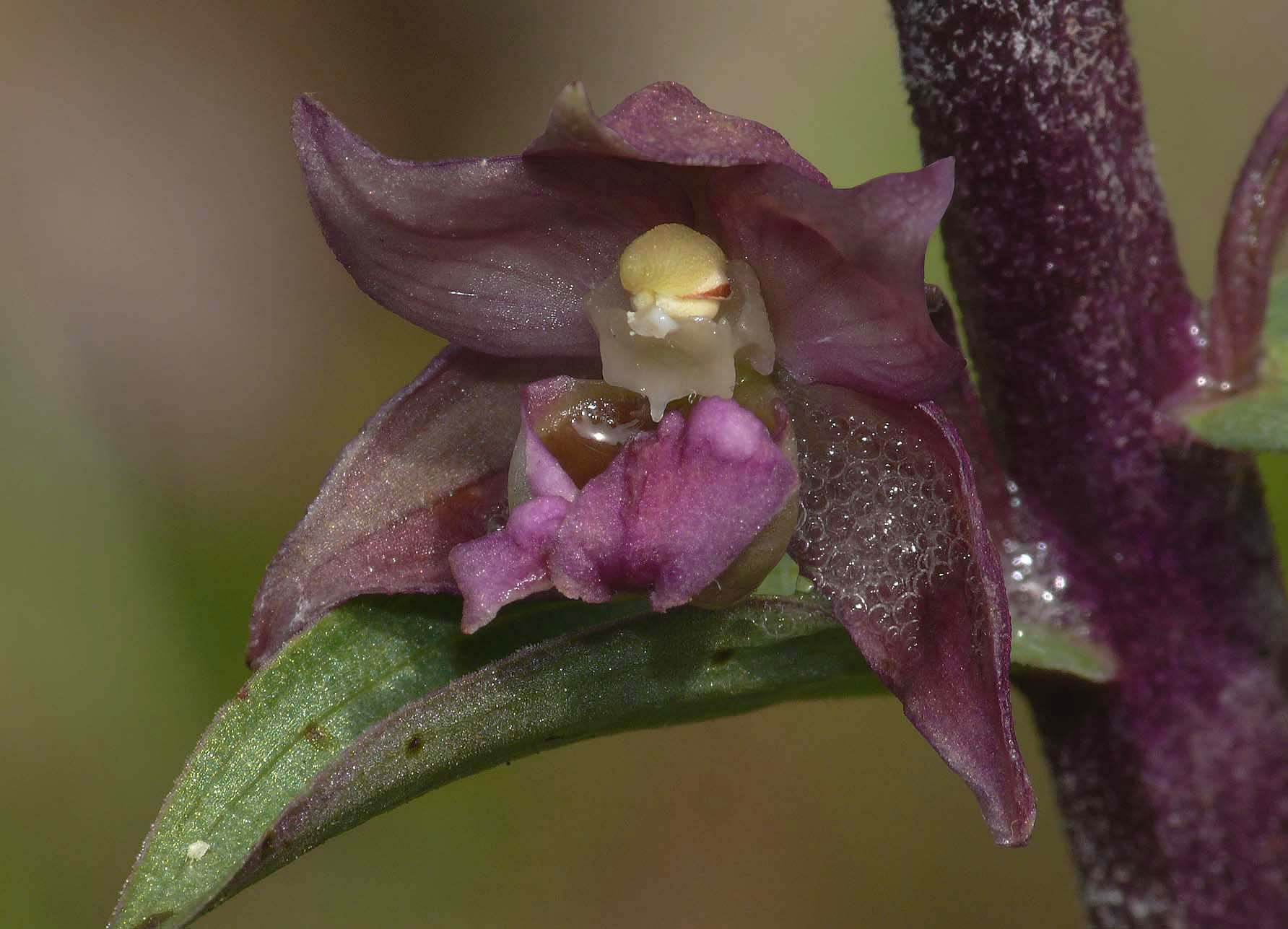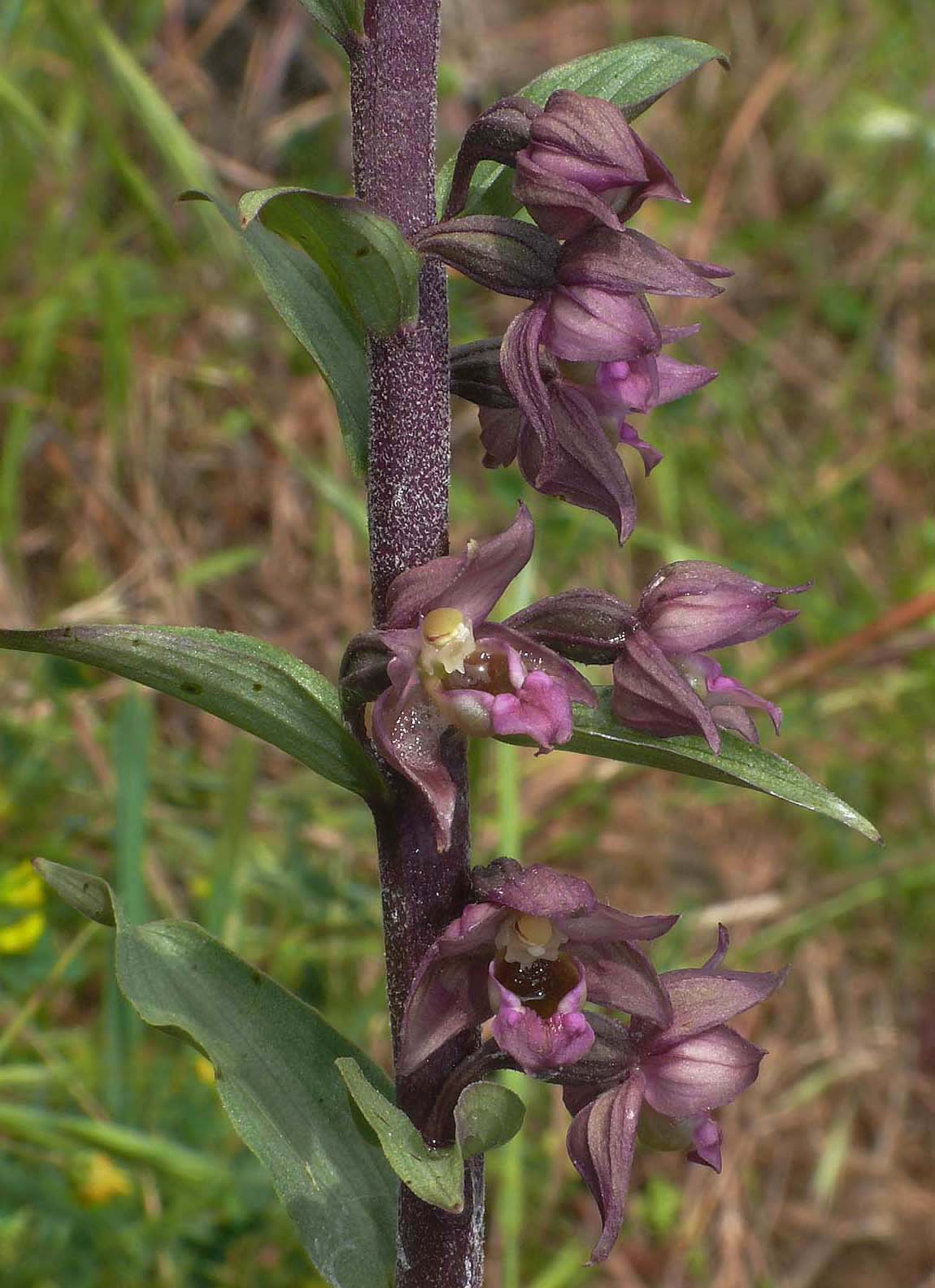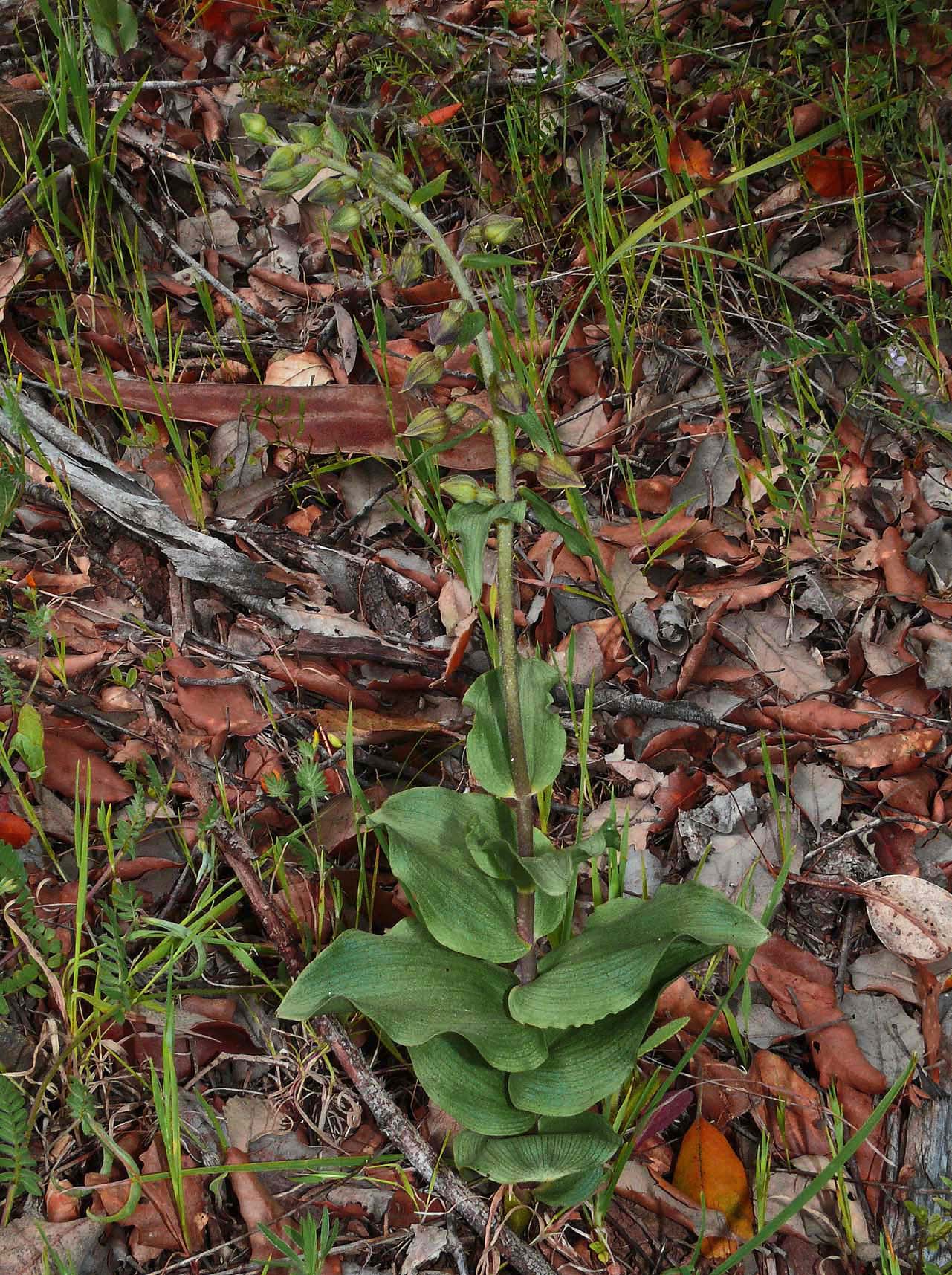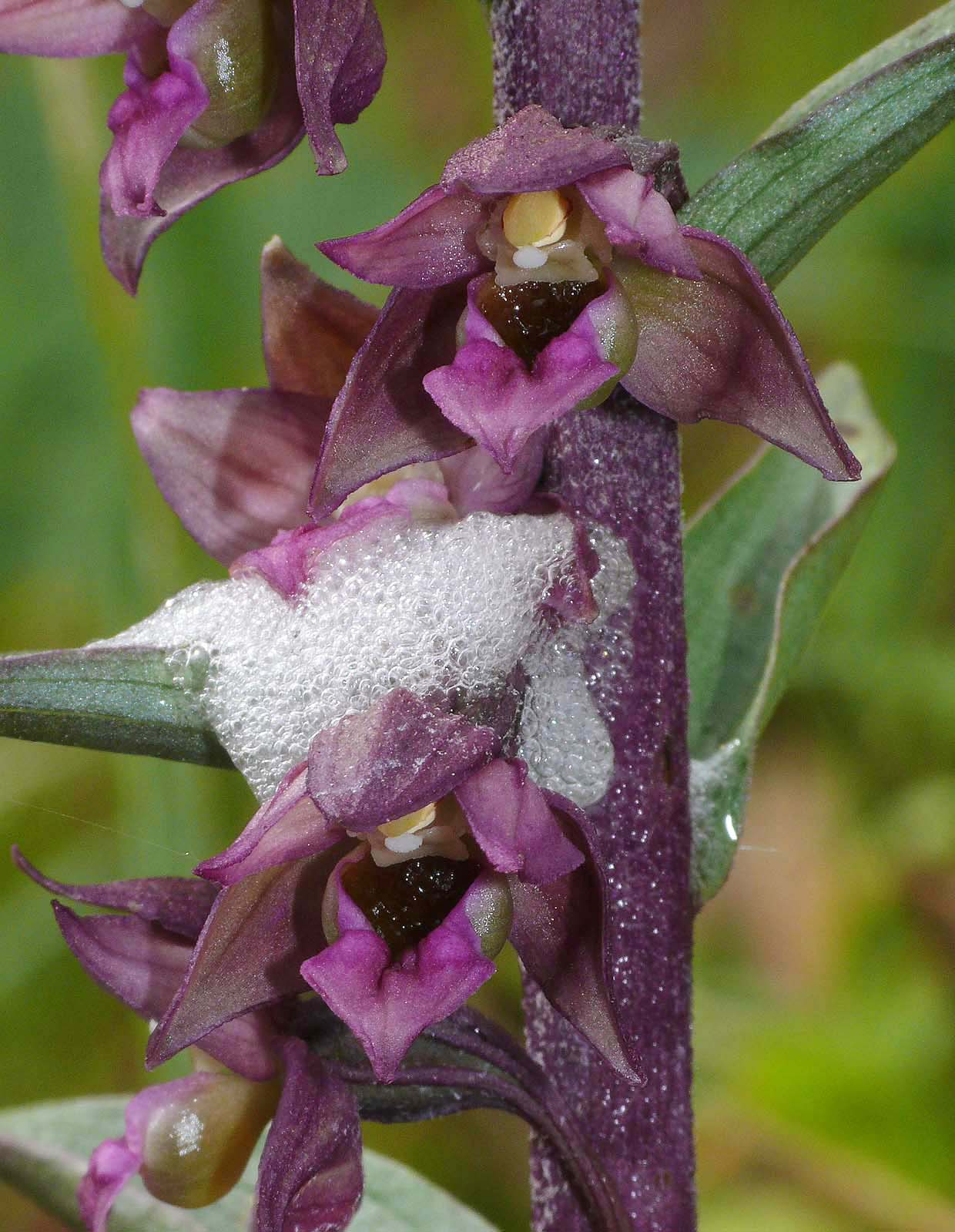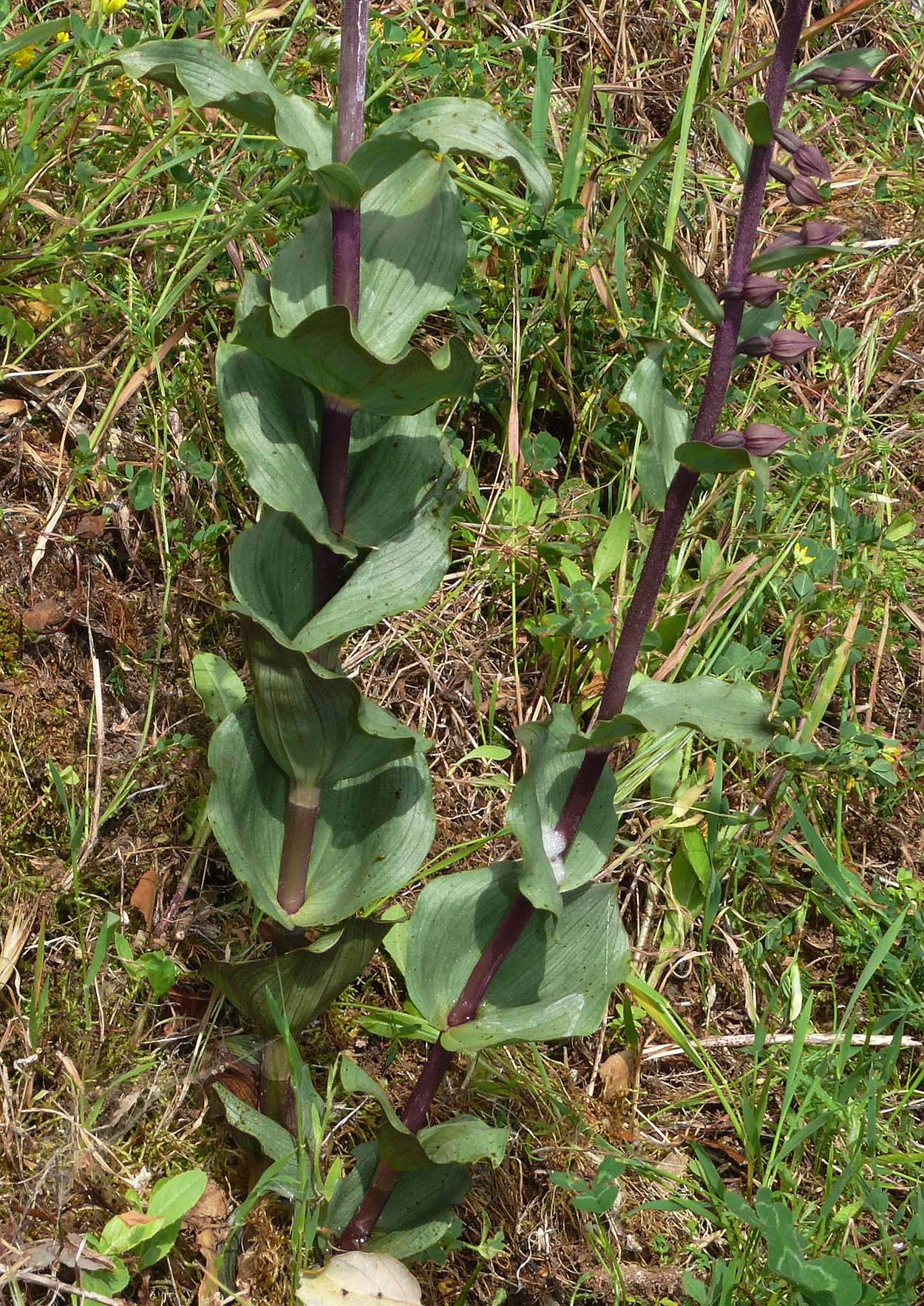E. tremolsii
was first described by Pau from Barcelona, Spain in 1914 and was
named in honour of the 19th century Spanish botanist, F. Tremols y
Borrell. It is a member of the E. tremolii group which are all
characterised by strongly hairy stems and short, broad leaves
which tend to be densest towards the bottom third of the flowering
stem. This group appears to be closely related to E. atrorubens and its
thought that E. tremolsii is probably one of its ancestors. The colouration is often darker and more violet than that of E. atrorubens, as is the case with the plants illustrated here.
This orchid was until recently
thought to have a largely western Mediterranean distribution
that could be found as far north as the Vercors of southern France
and reaching
the Maghreb of northern Africa to the south. It also occurred in small
numbers in Sardinia and Malta. In 2021 however, a study of the E. helleborine group of Epipactis concluded that E. densifolia was not a separate species and in fact represented eastern populations of E. tremolsii. This was not completely surprising as the morphological similarities of the two taxa had long been noted. The range of this species is therefore extended to include Anatolia, Samos, Chios and Lesbos. E. tremolsii is an orchid that tolerates a range of conditions but as with its
cousins is typically found in shady positions in woodland where it can
grow to a substantial 75 cms. The flowering stem can easily be confused
with similar species but it is usually recognizable by the
characteristic alternate clustering of the cordate leaves towardsits base.
In the south of its range it freqently grows alongside E. lusitanica,
an orchid which has similar flowers but is normally a much shorter,
less robust plant. On more acidic soils however, it can appear
ecotypical and
and bear a close esemblance. The photos are from the Algarve and date from the middle of April. 